Answered step by step
Verified Expert Solution
Question
1 Approved Answer
hello, I need help with this. these are the labor materials. Before you attempt this assignment, you will need to read the labor materials and
hello, I need help with this. 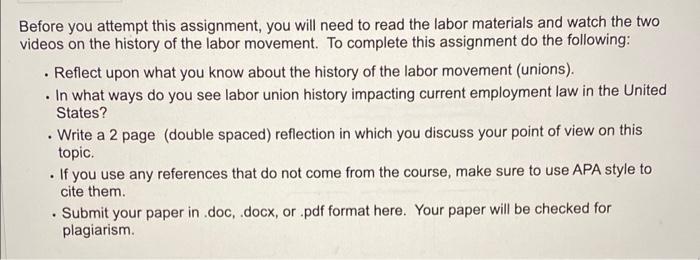

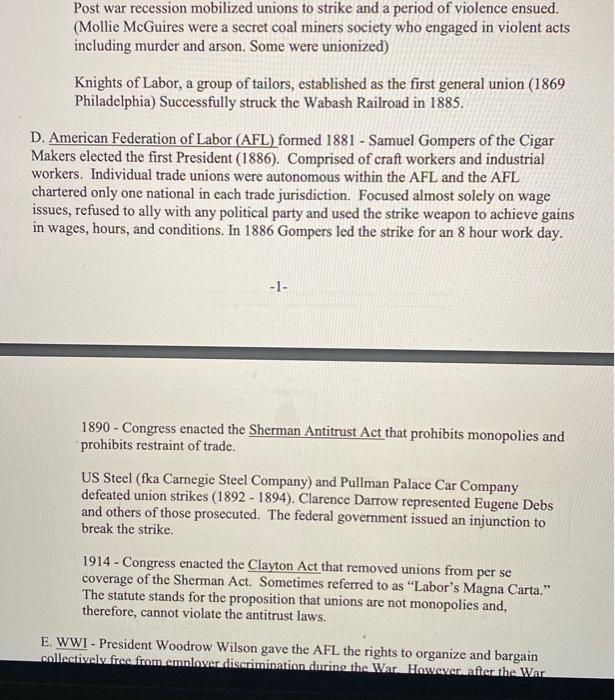
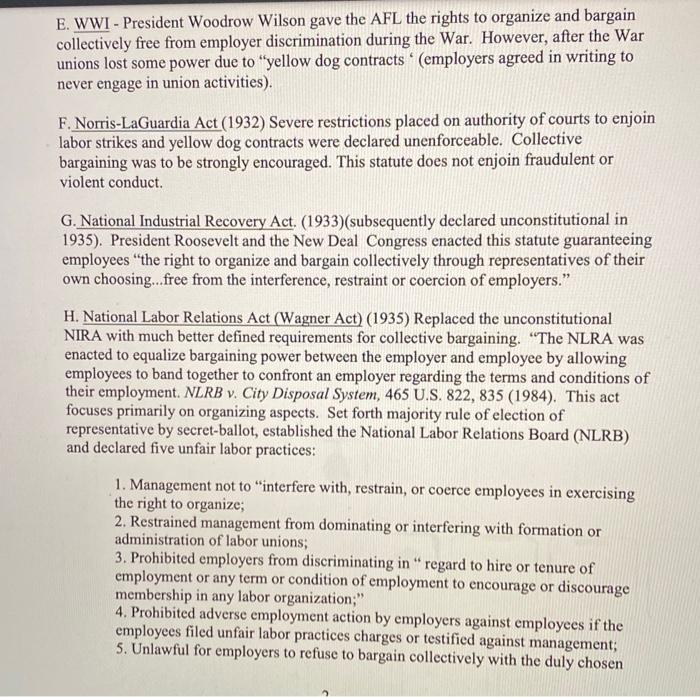
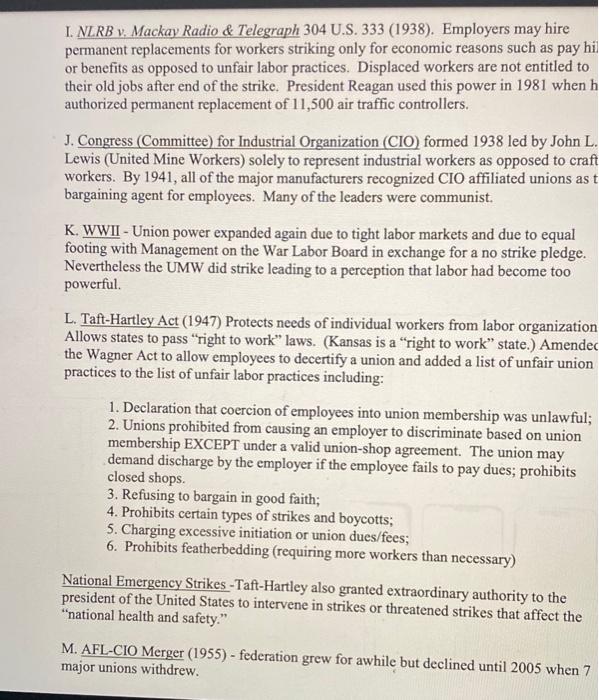
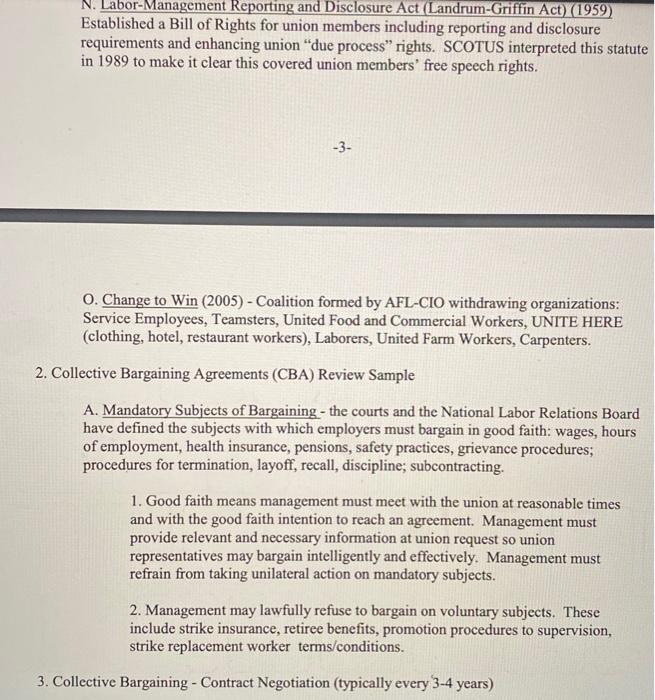
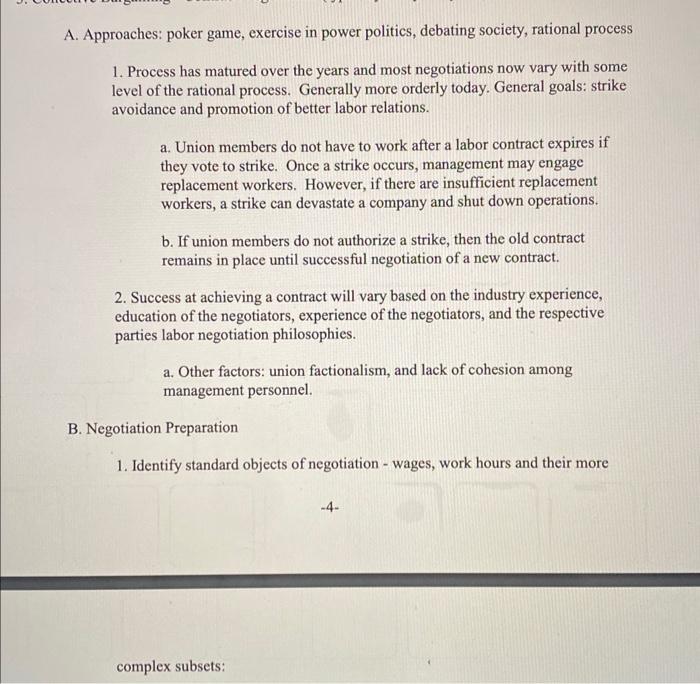
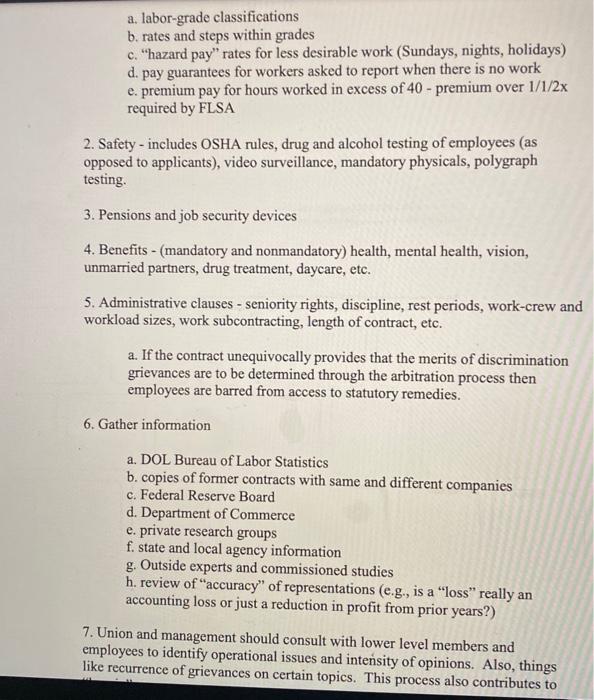

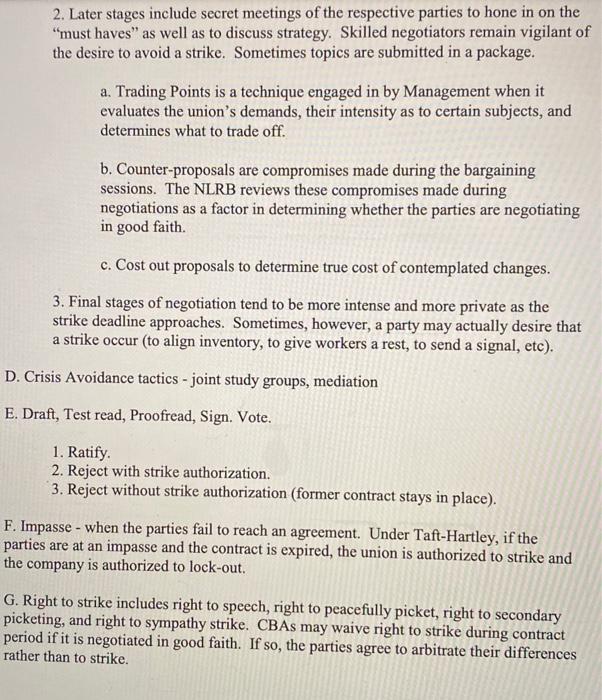
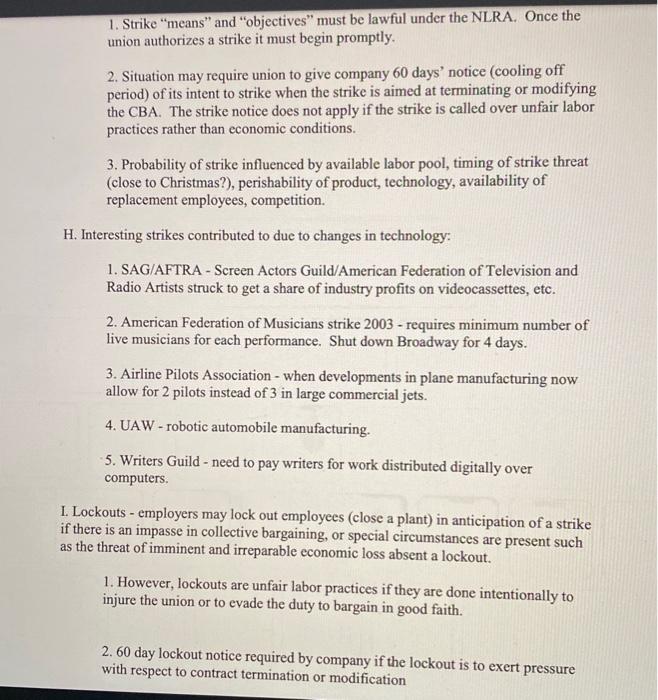
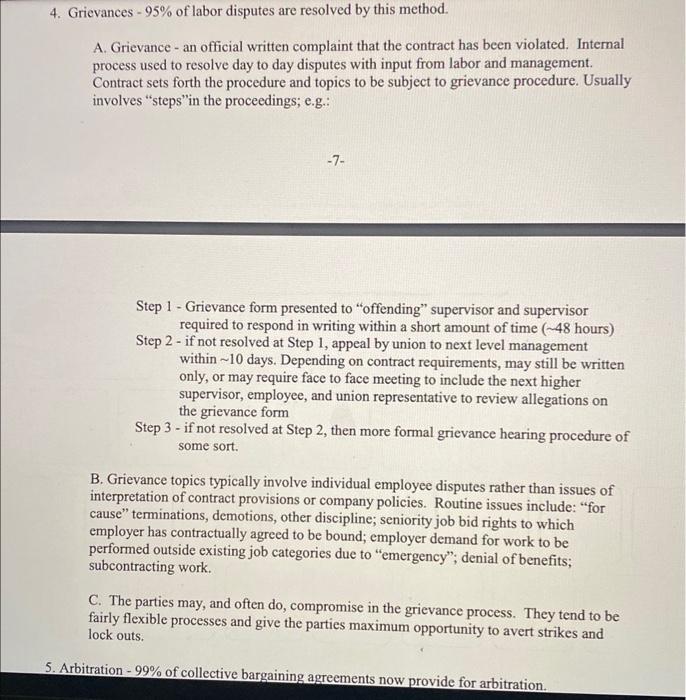
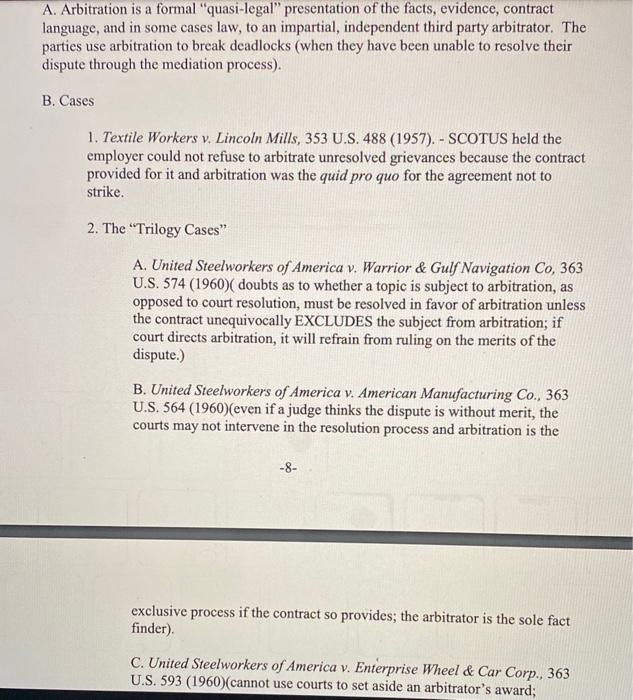
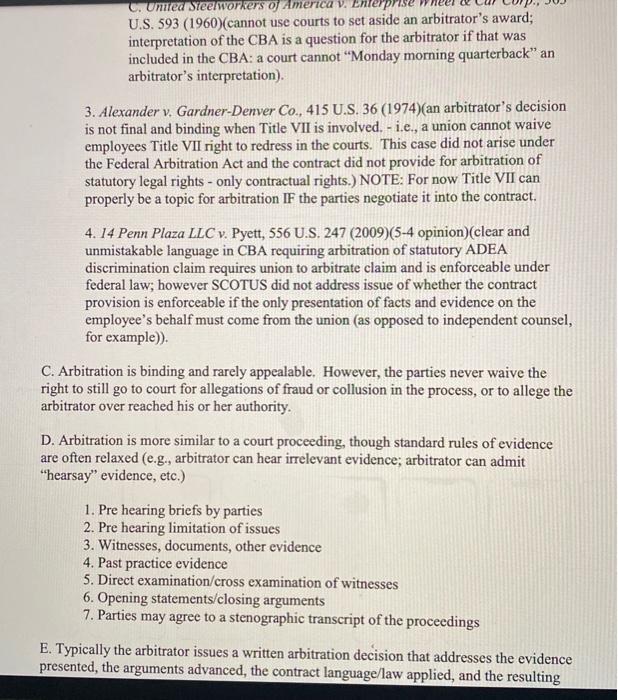
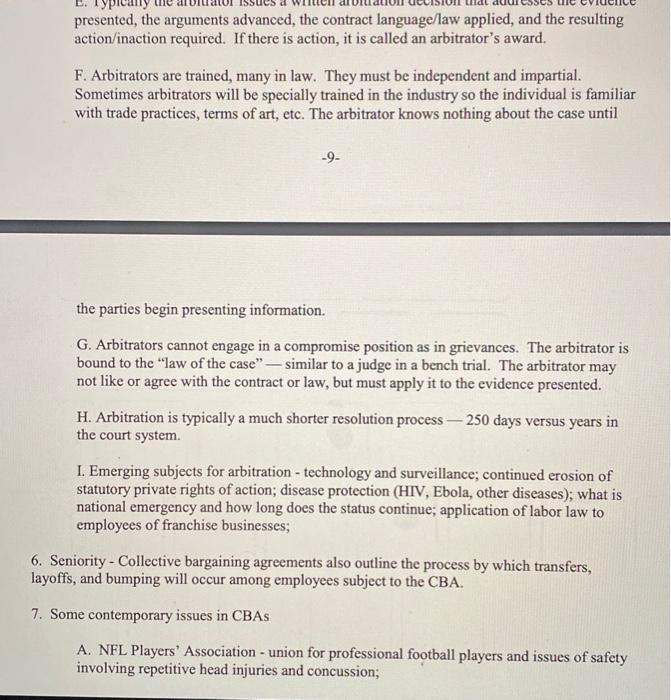
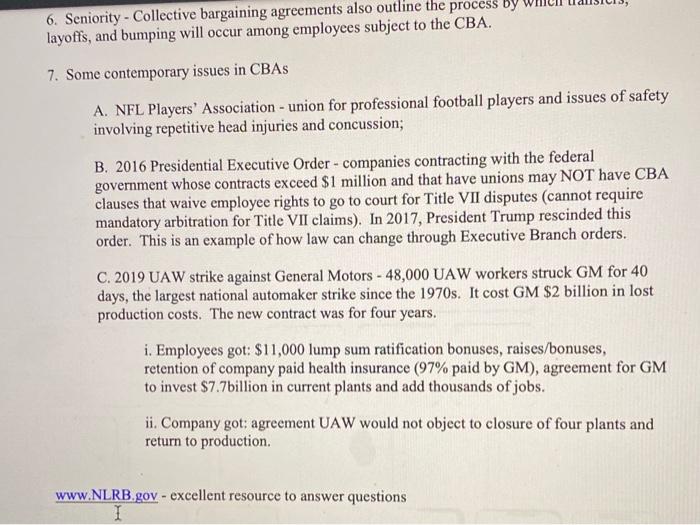
Before you attempt this assignment, you will need to read the labor materials and watch the two videos on the history of the labor movement. To complete this assignment do the following: - Reflect upon what you know about the history of the labor movement (unions). - In what ways do you see labor union history impacting current employment law in the United States? - Write a 2 page (double spaced) reflection in which you discuss your point of view on this topic. - If you use any references that do not come from the course, make sure to use APA style to cite them. - Submit your paper in .doc, .docx, or .pdf format here. Your paper will be checked for plagiarism. Labor Law Outline (11-2019) History of Labor Unions ECONOMIC AXIOM: Unions are strong when labor markets are tight and weaker when labor markets are over supplied. A. Ancient Guilds - Roman "collegia" (craft guilds) B. Medieval Guilds - an association of craftsmen or merchants formed for mutual aid and protection and to further their trade interests Merchant Guilds - emerged with the development of cities Craft Guilds - (masons, bookbinders, architects, painters, etc.) developed to organize and regulate business among them to promote prosperity. Masters, Journeymen, Apprentices. C. Early American Trade Unions - printers, carpenters, tailors, artisans - organized because they were in short supply. They agreed on wage levels and pledged not to work for employers who refused to pay those amounts - CLOSED SHOP. They were willing to strike. (1806 strike by The Journeyman Cordwainers (shoemakers) was declared criminally unlawful.) 1819 - depression undercut power of the union, then revived by 1822 and crashed again by 1837 . Railroad expansionism and influx of immigrants (Irish, German, English) - need for wage, working condition, membership and bargaining standardization increased for unions now competing with each other. First national trade union - International Typographical Union.(1852) Civil war created worker shortage and President Lincoln was prolabor. "Labor is the superior of capital and deserves much the higher consideration." - Lincoln Post war recession mobilized unions to strike and a period of violence ensued. (Mollie McGuires were a secret coal miners society who engaged in violent acts including murder and arson. Some were unionized) Post war recession mobilized unions to strike and a period of violence ensued. (Mollie McGuires were a secret coal miners society who engaged in violent acts including murder and arson. Some were unionized) Knights of Labor, a group of tailors, established as the first general union (1869 Philadelphia) Successfully struck the Wabash Railroad in 1885. D. American Federation of Labor (AFL) formed 1881 - Samuel Gompers of the Cigar Makers elected the first President (1886). Comprised of craft workers and industrial workers. Individual trade unions were autonomous within the AFL and the AFL chartered only one national in each trade jurisdiction. Focused almost solely on wage issues, refused to ally with any political party and used the strike weapon to achieve gains in wages, hours, and conditions. In 1886 Gompers led the strike for an 8 hour work day. 1890 - Congress enacted the Sherman Antitrust Act that prohibits monopolies and prohibits restraint of trade. US Steel (fka Carnegie Steel Company) and Pullman Palace Car Company defeated union strikes (1892 - 1894). Clarence Darrow represented Eugene Debs and others of those prosecuted. The federal government issued an injunction to break the strike. 1914 - Congress enacted the Clayton Act that removed unions from per se coverage of the Sherman Act. Sometimes referred to as "Labor's Magna Carta." The statute stands for the proposition that unions are not monopolies and, therefore, cannot violate the antitrust laws. E. WWI - President Woodrow Wilson gave the AFL the rights to organize and bargain collectively frec from emnlover discrimination during the War. However. after the War E. WWI - President Woodrow Wilson gave the AFL the rights to organize and bargain collectively free from employer discrimination during the War. However, after the War unions lost some power due to "yellow dog contracts ' (employers agreed in writing to never engage in union activities). F. Norris-LaGuardia Act (1932) Severe restrictions placed on authority of courts to enjoin labor strikes and yellow dog contracts were declared unenforceable. Collective bargaining was to be strongly encouraged. This statute does not enjoin fraudulent or violent conduct. G. National Industrial Recovery Act. (1933)(subsequently declared unconstitutional in 1935). President Roosevelt and the New Deal Congress enacted this statute guaranteeing employees "the right to organize and bargain collectively through representatives of their own choosing...free from the interference, restraint or coercion of employers." H. National Labor Relations Act (Wagner Act) (1935) Replaced the unconstitutional NIRA with much better defined requirements for collective bargaining. "The NLRA was enacted to equalize bargaining power between the employer and employee by allowing employees to band together to confront an employer regarding the terms and conditions of their employment. NLRB v. City Disposal System, 465 U.S. 822, 835 (1984). This act focuses primarily on organizing aspects. Set forth majority rule of election of representative by secret-ballot, established the National Labor Relations Board (NLRB) and declared five unfair labor practices: 1. Management not to "interfere with, restrain, or coerce employees in exercising the right to organize; 2. Restrained management from dominating or interfering with formation or administration of labor unions; 3. Prohibited employers from discriminating in "regard to hire or tenure of employment or any term or condition of employment to encourage or discourage membership in any labor organization;" 4. Prohibited adverse employment action by employers against employees if the employees filed unfair labor practices charges or testified against management; 5. Unlawful for employers to refuse to bargain collectively with the duly chosen I. NLRB v. Mackay Radio \& Telegraph 304 U.S. 333 (1938). Employers may hire permanent replacements for workers striking only for economic reasons such as pay hi. or benefits as opposed to unfair labor practices. Displaced workers are not entitled to their old jobs after end of the strike. President Reagan used this power in 1981 when h authorized permanent replacement of 11,500 air traffic controllers. J. Congress (Committee) for Industrial Organization (CIO) formed 1938 led by John L. Lewis (United Mine Workers) solely to represent industrial workers as opposed to craft workers. By 1941, all of the major manufacturers recognized CIO affiliated unions as bargaining agent for employees. Many of the leaders were communist. K. WWII - Union power expanded again due to tight labor markets and due to equal footing with Management on the War Labor Board in exchange for a no strike pledge. Nevertheless the UMW did strike leading to a perception that labor had become too powerful. L. Taft-Hartley Act (1947) Protects needs of individual workers from labor organization Allows states to pass "right to work" laws. (Kansas is a "right to work" state.) Amendec the Wagner Act to allow employees to decertify a union and added a list of unfair union practices to the list of unfair labor practices including: 1. Declaration that coercion of employees into union membership was unlawful; 2. Unions prohibited from causing an employer to discriminate based on union membership EXCEPT under a valid union-shop agreement. The union may demand discharge by the employer if the employee fails to pay dues; prohibits closed shops. 3. Refusing to bargain in good faith; 4. Prohibits certain types of strikes and boycotts; 5. Charging excessive initiation or union dues/fees; 6. Prohibits featherbedding (requiring more workers than necessary) National Emergency Strikes -Taft-Hartley also granted extraordinary authority to the president of the United States to intervene in strikes or threatened strikes that affect the "national health and safety." M. AFL-CIO Merger (1955) - federation grew for awhile but declined until 2005 when 7 major unions withdrew. N. Labor-Management Reporting and Disclosure Act (Landrum-Griffin Act) (1959) Established a Bill of Rights for union members including reporting and disclosure requirements and enhancing union "due process" rights. SCOTUS interpreted this statute in 1989 to make it clear this covered union members' free speech rights. 3 O. Change to Win (2005) - Coalition formed by AFL-CIO withdrawing organizations: Service Employees, Teamsters, United Food and Commercial Workers, UNITE HERE (clothing, hotel, restaurant workers), Laborers, United Farm Workers, Carpenters. 2. Collective Bargaining Agreements (CBA) Review Sample A. Mandatory Subjects of Bargaining - the courts and the National Labor Relations Board have defined the subjects with which employers must bargain in good faith: wages, hours of employment, health insurance, pensions, safety practices, grievance procedures; procedures for termination, layoff, recall, discipline; subcontracting. 1. Good faith means management must meet with the union at reasonable times and with the good faith intention to reach an agreement. Management must provide relevant and necessary information at union request so union representatives may bargain intelligently and effectively. Management must refrain from taking unilateral action on mandatory subjects. 2. Management may lawfully refuse to bargain on voluntary subjects. These include strike insurance, retiree benefits, promotion procedures to supervision, strike replacement worker terms/conditions. 3. Collective Bargaining - Contract Negotiation (typically every 3-4 years) Approaches: poker game, exercise in power politics, debating society, rational process 1. Process has matured over the years and most negotiations now vary with some level of the rational process. Generally more orderly today. General goals: strike avoidance and promotion of better labor relations. a. Union members do not have to work after a labor contract expires if they vote to strike. Once a strike occurs, management may engage replacement workers. However, if there are insufficient replacement workers, a strike can devastate a company and shut down operations. b. If union members do not authorize a strike, then the old contract remains in place until successful negotiation of a new contract. 2. Success at achieving a contract will vary based on the industry experience, education of the negotiators, experience of the negotiators, and the respective parties labor negotiation philosophies. a. Other factors: union factionalism, and lack of cohesion among management personnel. B. Negotiation Preparation 1. Identify standard objects of negotiation - wages, work hours and their more a. labor-grade classifications b. rates and steps within grades c. "hazard pay" rates for less desirable work (Sundays, nights, holidays) d. pay guarantees for workers asked to report when there is no work e. premium pay for hours worked in excess of 40 - premium over 1/1/2x required by FLSA 2. Safety - includes OSHA rules, drug and alcohol testing of employees (as opposed to applicants), video surveillance, mandatory physicals, polygraph testing. 3. Pensions and job security devices 4. Benefits - (mandatory and nonmandatory) health, mental health, vision, unmarried partners, drug treatment, daycare, etc. 5. Administrative clauses - seniority rights, discipline, rest periods, work-crew and workload sizes, work subcontracting, length of contract, etc. a. If the contract unequivocally provides that the merits of discrimination grievances are to be determined through the arbitration process then employees are barred from access to statutory remedies. 6. Gather information a. DOL Bureau of Labor Statistics b. copies of former contracts with same and different companies c. Federal Reserve Board d. Department of Commerce e. private research groups f. state and local agency information g. Outside experts and commissioned studies h. review of "accuracy" of representations (e.g., is a "loss" really an accounting loss or just a reduction in profit from prior years?) 7. Union and management should consult with lower level members and employees to identify operational issues and intensity of opinions. Also, things like recurrence of grievances on certain topics. This process also contributes to 8. Review substantive law on bargaining topics - have legal and other specialist teams review current contracts, and current law for compliance. 9. Assess strike vulnerability. 10. Prepare bargaining book. 11. Agree on meeting times and locations. Bargaining Process 1. Early stages often include the union setting out a list of demands, often with "pie in the sky" requests. Done to put subjects on the table for later withdrawal and sometimes to obscure the importance of demands. In recent history management has begun to engage in "blue-skying" also. Early meetings are often attended by invited guests and may be as much for show as for progress. 2. Later stages include secret meetings of the respective parties to hone in on the "must haves" as well as to discuss strategy. Skilled negotiators remain vigilant of the desire to avoid a strike. Sometimes topics are submitted in a package. a. Trading Points is a technique engaged in by Management when it evaluates the union's demands, their intensity as to certain subjects, and determines what to trade off. b. Counter-proposals are compromises made during the bargaining sessions. The NLRB reviews these compromises made during negotiations as a factor in determining whether the parties are negotiating 2. Later stages include secret meetings of the respective parties to hone in on the "must haves" as well as to discuss strategy. Skilled negotiators remain vigilant of the desire to avoid a strike. Sometimes topics are submitted in a package. a. Trading Points is a technique engaged in by Management when it evaluates the union's demands, their intensity as to certain subjects, and determines what to trade off. b. Counter-proposals are compromises made during the bargaining sessions. The NLRB reviews these compromises made during negotiations as a factor in determining whether the parties are negotiating in good faith. c. Cost out proposals to determine true cost of contemplated changes. 3. Final stages of negotiation tend to be more intense and more private as the strike deadline approaches. Sometimes, however, a party may actually desire that a strike occur (to align inventory, to give workers a rest, to send a signal, etc). D. Crisis Avoidance tactics - joint study groups, mediation E. Draft, Test read, Proofread, Sign. Vote. 1. Ratify. 2. Reject with strike authorization. 3. Reject without strike authorization (former contract stays in place). F. Impasse - when the parties fail to reach an agreement. Under Taft-Hartley, if the parties are at an impasse and the contract is expired, the union is authorized to strike and the company is authorized to lock-out. G. Right to strike includes right to speech, right to peacefully picket, right to secondary picketing, and right to sympathy strike. CBAs may waive right to strike during contract period if it is negotiated in good faith. If so, the parties agree to arbitrate their differences rather than to strike. 1. Strike "means" and "objectives" must be lawful under the NLRA. Once the union authorizes a strike it must begin promptly. 2. Situation may require union to give company 60 days' notice (cooling off period) of its intent to strike when the strike is aimed at terminating or modifying the CBA. The strike notice does not apply if the strike is called over unfair labor practices rather than economic conditions. 3. Probability of strike influenced by available labor pool, timing of strike threat (close to Christmas?), perishability of product, technology, availability of replacement employees, competition. H. Interesting strikes contributed to due to changes in technology: 1. SAG/AFTRA - Screen Actors Guild/American Federation of Television and Radio Artists struck to get a share of industry profits on videocassettes, etc. 2. American Federation of Musicians strike 2003 - requires minimum number of live musicians for each performance. Shut down Broadway for 4 days. 3. Airline Pilots Association - when developments in plane manufacturing now allow for 2 pilots instead of 3 in large commercial jets. 4. UAW - robotic automobile manufacturing. 5. Writers Guild - need to pay writers for work distributed digitally over computers. I. Lockouts - employers may lock out employees (close a plant) in anticipation of a strike if there is an impasse in collective bargaining, or special circumstances are present such as the threat of imminent and irreparable economic loss absent a lockout. 1. However, lockouts are unfair labor practices if they are done intentionally to injure the union or to evade the duty to bargain in good faith. 2. 60 day lockout notice required by company if the lockout is to exert pressure with respect to contract termination or modification 4. Grievances 95% of labor disputes are resolved by this method. A. Grievance - an official written complaint that the contract has been violated. Internal process used to resolve day to day disputes with input from labor and management. Contract sets forth the procedure and topics to be subject to grievance procedure. Usually involves "steps" in the proceedings; e.g.: 7 Step 1 - Grievance form presented to "offending" supervisor and supervisor required to respond in writing within a short amount of time ( -48 hours) Step 2 - if not resolved at Step 1, appeal by union to next level management within 10 days. Depending on contract requirements, may still be written only, or may require face to face meeting to include the next higher supervisor, employee, and union representative to review allegations on the grievance form Step 3 - if not resolved at Step 2, then more formal grievance hearing procedure of some sort. B. Grievance topics typically involve individual employee disputes rather than issues of interpretation of contract provisions or company policies. Routine issues include: "for cause" terminations, demotions, other discipline; seniority job bid rights to which employer has contractually agreed to be bound; employer demand for work to be performed outside existing job categories due to "emergency"; denial of benefits; subcontracting work. C. The parties may, and often do, compromise in the grievance process. They tend to be fairly flexible processes and give the parties maximum opportunity to avert strikes and lock outs. A. Arbitration is a formal "quasi-legal" presentation of the facts, evidence, contract language, and in some cases law, to an impartial, independent third party arbitrator. The parties use arbitration to break deadlocks (when they have been unable to resolve their dispute through the mediation process). B. Cases 1. Textile Workers v, Lincoln Mills, 353 U.S. 488 (1957). - SCOTUS held the employer could not refuse to arbitrate unresolved grievances because the contract provided for it and arbitration was the quid pro quo for the agreement not to strike. 2. The "Trilogy Cases" A. United Steelworkers of America v. Warrior \& Gulf Navigation Co, 363 U.S. 574(1960) (doubts as to whether a topic is subject to arbitration, as opposed to court resolution, must be resolved in favor of arbitration unless the contract unequivocally EXCLUDES the subject from arbitration; if court directs arbitration, it will refrain from ruling on the merits of the dispute.) B. United Steelworkers of America v. American Manufacturing Co., 363 U.S. 564(1960) (even if a judge thinks the dispute is without merit, the courts may not intervene in the resolution process and arbitration is the 8 exclusive process if the contract so provides; the arbitrator is the sole fact finder). C. United Steelworkers of America v. Enterprise Wheel \& Car Corp., 363 U.S. 593 (1960)(cannot use courts to set aside an arbitrator's award; U.S. 593(1960) (cannot use courts to set aside an arbitrator's award; interpretation of the CBA is a question for the arbitrator if that was included in the CBA: a court cannot "Monday morning quarterback" an arbitrator's interpretation). 3. Alexander v. Gardner-Denver Co., 415 U.S. 36 (1974)(an arbitrator's decision is not final and binding when Title VII is involved. - i.e., a union cannot waive employees Title VII right to redress in the courts. This case did not arise under the Federal Arbitration Act and the contract did not provide for arbitration of statutory legal rights - only contractual rights.) NOTE: For now Title VII can properly be a topic for arbitration IF the parties negotiate it into the contract. 4. 14 Penn Plaza LLC v. Pyett, 556 U.S. 247 (2009)(5-4 opinion)(clear and unmistakable language in CBA requiring arbitration of statutory ADEA discrimination claim requires union to arbitrate claim and is enforceable under federal law; however SCOTUS did not address issue of whether the contract provision is enforceable if the only presentation of facts and evidence on the employee's behalf must come from the union (as opposed to independent counsel, for example)). C. Arbitration is binding and rarely appealable. However, the parties never waive the right to still go to court for allegations of fraud or collusion in the process, or to allege the arbitrator over reached his or her authority. D. Arbitration is more similar to a court proceeding, though standard rules of evidence are often relaxed (e.g., arbitrator can hear irrelevant evidence; arbitrator can admit "hearsay" evidence, etc.) 1. Pre hearing briefs by parties 2. Pre hearing limitation of issues 3. Witnesses, documents, other evidence 4. Past practice evidence 5. Direct examination/cross examination of witnesses 6. Opening statements/closing arguments 7. Parties may agree to a stenographic transcript of the proceedings E. Typically the arbitrator issues a written arbitration decision that addresses the evidence presented, the arguments advanced, the contract language/law applied, and the resulting presented, the arguments advanced, the contract language/law applied, and the resulting action/inaction required. If there is action, it is called an arbitrator's award. F. Arbitrators are trained, many in law. They must be independent and impartial. Sometimes arbitrators will be specially trained in the industry so the individual is familiar with trade practices, terms of art, etc. The arbitrator knows nothing about the case until the parties begin presenting information. G. Arbitrators cannot engage in a compromise position as in grievances. The arbitrator is bound to the "law of the case" - similar to a judge in a bench trial. The arbitrator may not like or agree with the contract or law, but must apply it to the evidence presented. H. Arbitration is typically a much shorter resolution process - 250 days versus years in the court system. I. Emerging subjects for arbitration - technology and surveillance; continued erosion of statutory private rights of action; disease protection (HIV, Ebola, other diseases); what is national emergency and how long does the status continue; application of labor law to employees of franchise businesses; 6. Seniority - Collective bargaining agreements also outline the process by which transfers, layoffs, and bumping will occur among employees subject to the CBA. 7. Some contemporary issues in CBAs A. NFL Players' Association - union for professional football players and issues of safety involving repetitive head injuries and concussion; 6. Seniority - Collective bargaining agreements also outline the proces layoffs, and bumping will occur among employees subject to the CBA. 7. Some contemporary issues in CBAs A. NFL Players' Association - union for professional football players and issues of safety involving repetitive head injuries and concussion; B. 2016 Presidential Executive Order - companies contracting with the federal government whose contracts exceed $1 million and that have unions may NOT have CBA clauses that waive employee rights to go to court for Title VII disputes (cannot require mandatory arbitration for Title VII claims). In 2017, President Trump rescinded this order. This is an example of how law can change through Executive Branch orders. C. 2019 UAW strike against General Motors - 48,000 UAW workers struck GM for 40 days, the largest national automaker strike since the 1970s. It cost GM $2 billion in lost production costs. The new contract was for four years. i. Employees got: $11,000 lump sum ratification bonuses, raises/bonuses, retention of company paid health insurance ( 97% paid by GM) ), agreement for GM to invest $7.7 billion in current plants and add thousands of jobs. ii. Company got: agreement UAW would not object to closure of four plants and return to production 
these are the labor materials.















Step by Step Solution
There are 3 Steps involved in it
Step: 1

Get Instant Access to Expert-Tailored Solutions
See step-by-step solutions with expert insights and AI powered tools for academic success
Step: 2

Step: 3

Ace Your Homework with AI
Get the answers you need in no time with our AI-driven, step-by-step assistance
Get Started


